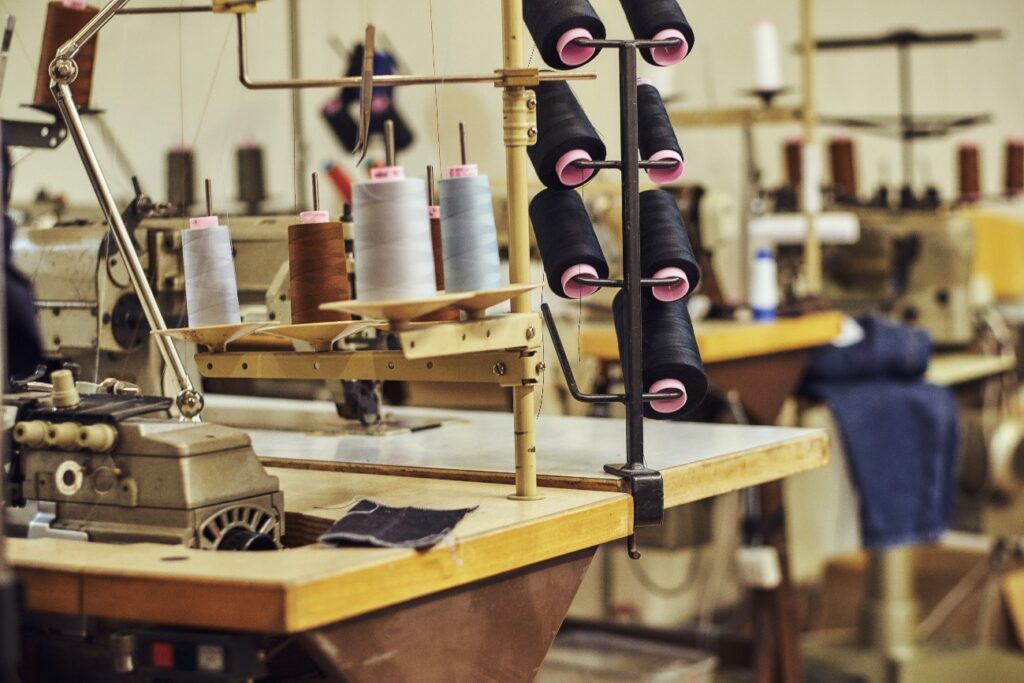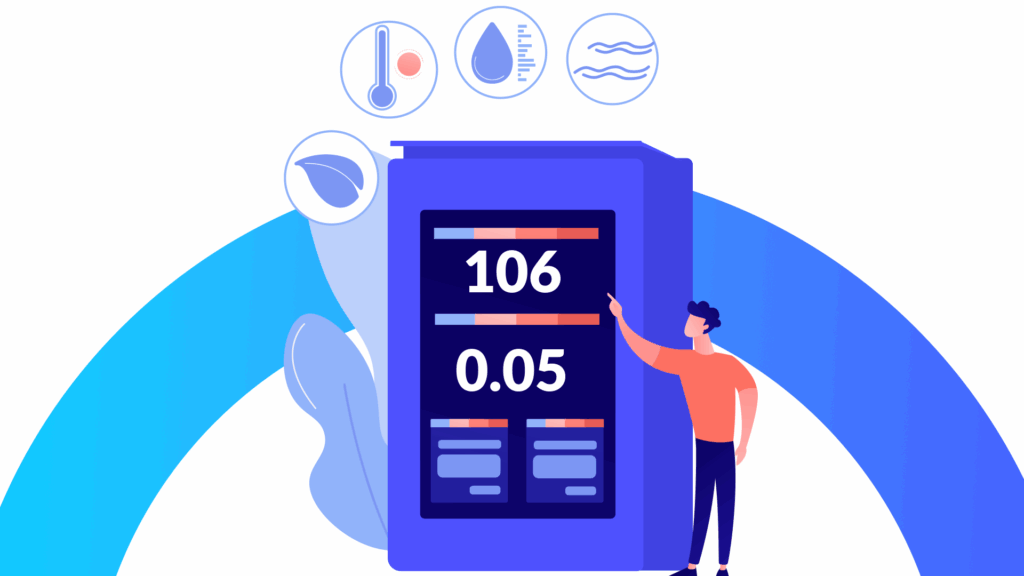Textile manufacturing consumes huge energy. Smart energy management powered by IIoT and AI helps mills cut costs, predict issues, and run greener. Discover how it enables better decisions, reduces waste, and simplifies plant-wide energy control.
Introduction
The textile industry consumes huge amounts of energy. From spinning to dyeing and finishing, each stage relies on power-hungry equipment. Steam boilers, compressors, motors, and chillers all work around the clock. As energy prices climb and sustainability standards rise, inefficiency has become unaffordable.
The textile sector, despite its rapid growth, remains one of the least energy-efficient. In 2023, the global textile market was valued at USD 1,837.27 billion and is expected to grow at a 7.4% CAGR through 2030.
Traditional energy tracking tools fall short. They miss key data, can’t adjust in real time, and often fail to pinpoint waste. That’s where smart energy management steps in. By utilizing Industry 4.0. tech such as IoT sensors and AI/ML technology, it supports smarter decisions via connected systems and intelligent automation.
What is smart energy management?
Smart energy management means more than just tracking usage. It brings in digital tools like IoT sensors, data platforms, and automation. These tools work together to help factories monitor, analyze, and optimize energy use at every level.
It doesn’t just gather numbers. It finds patterns, forecasts demand, and helps managers act before energy costs rise. Smart systems adapt to changes, flag inefficiencies, and recommend actions that reduce waste. This approach gives control back to the plant. It helps teams work smarter, not harder.
The textile industry: High energy, high risk

Textile manufacturing ranks among the most energy-intensive sectors in the world. Equipment runs nonstop, and each process depends on precise conditions. Small changes in load or temperature can drive huge energy spikes. Manually detecting these shifts is nearly impossible. Operators can’t monitor thousands of data points in real time. They often react after issues occur, which means energy has already been wasted.
Smart Energy Management brings visibility where it matters most. It tracks performance live and gives decision-makers clear insight into usage, cost, and potential problems before they escalate.
How IIoT and AI/ML make textile plants smarter
Industrial IoT (IIoT) brings every asset online. Machines once isolated now connect through smart sensors and data gateways. These sensors feed continuous data to central platforms, where it’s processed and visualized in real time.
Artificial Intelligence (AI) and Machine Learning (ML) then step in. They don’t just analyze current usage. They learn. These tools identify waste patterns, predict future demand, and suggest smart adjustments based on learned behavior.
For example, a smart system can detect a drop in boiler efficiency before it impacts production. It can also suggest shifting non-critical loads during peak tariff hours to save costs. This level of automation sets smart energy management apart from basic energy tracking.
In textile plants, where each machine runs at high capacity, such predictive control leads to substantial savings.
Benefits of smart energy management in textile facilities
Smart Energy Management isn’t just about saving energy, it’s about optimizing every phase of textile production. From spinning to finishing, each process draws power differently. A smart system brings control, insight, and efficiency where it matters most. Here’s how smart energy systems bring measurable gains to textile manufacturers:
1. Significant savings on steam and compressed air
Dyeing, drying, and washing depend heavily on steam. Leaks, poor insulation, or pressure drops often go unnoticed. Smart sensors monitor flow and pressure in real time, alerting teams to inefficiencies early. Compressed air, used in jet dyeing and loom cleaning, also drains energy when left unchecked. Smart systems optimize compressor usage and detect air leaks fast.
2. Stabilized energy loads across shifts
Textile plants often face sudden power surges when multiple machines start at once. These spikes increase tariffs and stress the grid. Smart systems help stagger loads and shift non-essential operations to off-peak hours, ensuring stable, cost-efficient energy use.
3. Proactive maintenance of energy-heavy equipment
Key equipment such as stenters, jet dyeing machines, and high-speed spindles consume vast energy. Over time, they lose efficiency due to scaling, friction, or clogged filters. Smart Energy Management monitors performance data continuously. It flags machines running outside optimal energy profiles, allowing maintenance before breakdowns happen. This reduces unplanned downtime and extends equipment life.
4. Optimized boiler performance and fuel use
Boilers are the beating heart of most textile operations. Poorly calibrated burners, delayed blowdowns, or variable feedwater conditions can lead to heavy energy loss. With a smart system in place, operators get live data on fuel-to-steam ratios, flue gas temperature, and boiler efficiency. The result is more controlled combustion, timely maintenance, and better fuel utilization.
5. Energy accountability across departments
Textile plants often struggle to assign energy costs to specific operations like weaving, dyeing, or finishing. Smart energy management makes it possible to track energy use by department, shift, or machine. Managers gain clarity on which areas perform efficiently and which need attention. This transparency promotes accountability and drives teams to improve their energy habits.
6. Better control of HVAC and lighting in production halls
Humidity and temperature control is vital in spinning and weaving areas. However, uncontrolled HVAC systems waste energy when running during off-hours or low occupancy. Smart systems use schedules, occupancy sensors, and ambient data to control lighting and HVAC use. This ensures worker comfort without overspending on utilities.
7. Enhanced compliance and sustainability metrics
Buyers and regulatory bodies are increasingly pushing textile exporters to meet energy and emission standards. With Smart Energy Management, plants can generate clean, audit-ready reports that show carbon footprint, energy intensity, and monthly trends. This not only helps meet ISO and GOTS guidelines but also boosts the brand’s credibility with eco-conscious customers.
Why OmniConnect™ is the ideal platform for textile energy optimization
Smart Energy Management needs the right platform. One that connects your machines, learns from their behavior, and provides clear insights.
That’s where OmniConnectTM fits perfectly.
OmniConnectTM connects your entire facility through edge devices and secure cloud infrastructure. It captures real-time data from every process including weaving, dyeing, spinning, or finishing, and sends it to a unified dashboard. But OmniConnectTM doesn’t stop at data collection. Its built-in AI/ML tech learns how your machines perform under different loads and conditions. It highlights unusual energy patterns, predicts failures, and guides your team with actionable insights.
There’s no need for complex setups or long training sessions. OmniConnectTM is easy to integrate, scalable across locations, and tailored for energy-intensive industries like textiles.
With OmniConnectTM, energy becomes manageable, predictable, and controllable. Not just monitored.
Final thoughts
Textile manufacturing faces growing pressure. Costs are rising. Regulators demand cleaner operations. Customers want sustainable products. In this landscape, traditional energy practices just don’t cut it.
Smart energy management offers a modern way forward. It provides the tools, intelligence, and foresight to optimize energy in real time. It reduces waste, boosts uptime, and builds resilience into your operations.
For textile plants aiming to stay competitive, this is not a luxury. It’s a necessity.
And with OmniConnectTM, turning your plant smart isn’t just possible. It’s simple, scalable, and proven. To learn more, speak to our experts.




